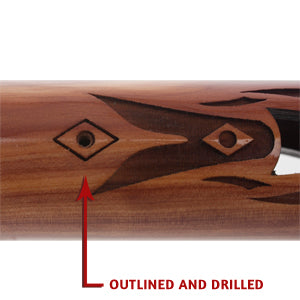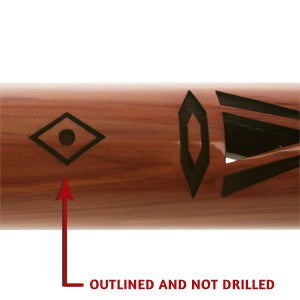The key of "G" is a bit more versatile because it is more compatible when playing with other instruments.
The key of "F#" (25") is traditional, haunting and is the key the Native American community has adopted as their key of preference. It is not as suitable for playing with other instruments.
The longer a flute is, the more breath control is required to get a sweet sound. Most of us are tempted by the lower tones. It is important to remember that starting with a flute that is easy to play speeds up the process of learning and, if you get hooked, you will want other flutes anyway. Everything you learn on an easy flute will transfer to future flutes you play.
If you play a woodwind now, or have in the past, you will be able to play any of our flutes. All of our instruments come with an instructional DVD making it easy to learn the flute.







